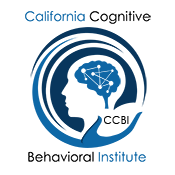I receive many phone calls, emails and requests from individuals who have found themselves in a relationship with a Sociopathic Type or Psychpathic Type Abuser. Both men and women, when they encounter one of these individuals, find themselves devestated, depressed, intimidated, afraid, and with some “soul trauma” that they want healing for. My counseling case load has increased substantially over the past five years with this type of relationship becoming more and more pronounced. Society is beginning to become educated on this relationship and the characteristics of this type of abuser. So to help some of you who haven’t heard of it or had someone in your life like this type of person – I have given you an overview below. Awareness can protect you from ever having to encounter this devestating type of relationship and person.
According to Dr. Robert Hare, professor of psychology at the University of British Columbia, Psychopaths can be classified into four major subgroups: distempered psychopaths, charismatic psychopaths, primary psychopaths, and secondary psychopaths. Distempered psychopaths have the tendency to fly into a rage or frenzy more easily and more frequently than other subtypes. They also tend to be men with incredibly strong sex drives; apparently obsessed by sexual urges. Their sexual activity usually consists of a variety of brief, superficial relations and an indiscriminate selection of sexual partners. They are also characterized as having a powerful desire for any illicit or illegal
indulgence. They receive a “high” or “rush” off of the excitement of risk-taking. The Boston Strangler, a well known serial-rapist-murderer, was one such psychopath (Hare, Without a Conscience,
Charismatic psychopaths are charming, attractive liars. They are usually gifted at some particular talent, and they use it to their advantage in manipulating others. They are usually very skilled orators, and possess an almost diabolic ability to persuade others out of everything
they possess, including their lives. Leaders of religious cults, for instance, are often classified as charismatic psychopaths (Hare, 23).
Primary psychopaths do not respond to punishment, apprehension, stress, or disapproval. They seem to be able to inhibit their antisocial impulses most of the time, not because of conscience, but because it satisfies some underlying motive. Words do not seem to have the
same meaning for them as they do for others. In fact, it is unknown if they truly understand the meaning of their own words, a condition called
“semantic aphasia” (Cleckley, 378).
Secondary psychopaths are risk-takers, but are also more likely to be guilt-prone and stress-reactive. They expose themselves to more stress than the average person, although they are just as vulnerable. They are daring, adventurous, and unconventional individuals. They are resolutely driven by a desire to escape or avoid pain, but are unable to resist temptation. “As their anxiety increases towards some forbidden object, so does their attraction to it. Their lives are driven by temptation” (Cleckley, 388).
There is a general consensus among psychologists that Psychopathy is the result of complex interactions between biological predispositions and social conditions. Over the last few years, there has been considerable progress in the analysis of biological predispositions and not as much in the analysis of the social factors related to Psychopathy (Sanmartin, Psychopaths and Serial Killers). Modern brain imaging techniques are confirming old theories that asserted a correlation between criminal behavior and particular defects in the frontal and temporal lobes. It has been ascertained that the prefrontal cortex of a selected sample of impulsive murderers is less active than the prefrontal
cortex of “normal” persons. This part of the brain seems to be responsible for controlling the actions mediated by structures such as the
amygdala, which is linked to aggressiveness (Sanmartin, Psychopaths and Serial Killers). Thus, it is believed that their violent behavior is caused by a very active amygdala without the control of the prefrontal cortex. Not only have dysfunctions been found in the impulsive murderer, but there have also been reports of anatomical defects, such as a reduced volume of prefrontal gray matter in individuals that have antisocial personality disorder. It is widely accepted that, in most cases, these biological predispositions will not cause violent or psychopathic behaviors without the proper psychological conditions.
There is no cure of a sociopath or psychopath. In fact, some evidence suggests that therapy makes them worse because they use the
therapeutic interactions to learn more about human vulnerabilities they can then exploit. They learn how to manipulate better and they learn better excuses that others will believe. They don’t usually seek therapy, unless there is something to gain from it. Their goal is to win at all costs and he/she is willing to do anything at all to win.

